Jul172014
Plan Your Ride
Tire repair kit and Harley-Davidson 12V portable air compressor
Plugging the punctured tire will quickly get the motorcycle operable again. Once plugged you can ride to a service station or dealership where it can be properly repaired. It sure beats sitting on the side of the road for hours waiting to be picked up.
Determine where the puncture is
Remove the object from the tyre
 This tool brushes away any excess debris and, at the same time, widens the puncture adequately so the plug will fit.
This tool brushes away any excess debris and, at the same time, widens the puncture adequately so the plug will fit. Clean the hole with the reaming tool

Insert the plug into the puncture hole
Now that your tyre is plugged, you can continue on your ride. It’s a good idea, though, to get the motorcycle in to a service station or dealership so a qualified technician can inspect the tyre to ensure it is safe. Tire plugs are not meant to be permanent solutions.
Remember, don’t get stuck somewhere without the proper tools.

You might also like to read: How to change a visor on a motorcycle helmet
You might also like to read: How to replace a Harley-Davidson key FOB battery
Click here to order your Harley-Davidson 12V portable compressor.
Matilda Douglas-Henry
There’s nothing more frustrating than an ill-timed tyre puncture. Your car’s tyres are always vulnerable to sharp objects and other obstructions that might cause them to lose pressure and become a serious safety hazard for anyone in your vehicle. On the bright side, punctures are such a common occurrence that for the most part they are a quick, cheap fix. DingGo is here to help with all your tyre puncture repair needs, including:
There are a few early
telltale signs that can indicate a car tyre puncture. Your vehicle might wobble
while you are driving it, or an isolated wheel feels unsteady. In the event of
a slow puncture, where the tyre is
steadily deflating, you will find it difficult to maintain control of your
steering wheel.
Your vehicle might wobble
while you are driving it, or an isolated wheel feels unsteady. In the event of
a slow puncture, where the tyre is
steadily deflating, you will find it difficult to maintain control of your
steering wheel.
When one of your tyres has experienced a medium puncture, your car will naturally veer in one direction. A blowout occurs when one of your tyres has been severely punctured; in that case, the car will swerve suddenly as if out of control.
Nails are the main cause of car tyre punctures. They are often bent, making them flat and easily able to puncture any nearby vulnerable objects. They can be kicked up by the car in front of you, or your front tyres can kick them back to your rear ones.
Other common causes
of punctures include screws and bolts, broken glass, sharp rocks,
and construction debris. Essentially
anything small, jagged and angular on the roads can be a cause for concern[1].
Tyre puncture repair is cheap and relatively effortless for any qualified technician, making it all the easier to repair your puncture as soon as it happens. This is essential for ensuring that your car is safe and driveable.
Car tyre puncture
repair should cost approximately $26 to
$40. In most cases a standard plug-patch method will be
used. This is when the technician removes the tyre from the rim and
locates/cleans the hole with soapy water. The inner liner is prepped with a
rasp, and rubber cement is applied to where the plug-patch will be inserted. A
plug-patch is pretty self-explanatory: the plug fills up the hole created by
the puncture, partially sealing the area, and the patch is pressed
against the liner to complete the seal. Once the process is complete, the tyre
will be reinstalled and rebalanced onto the rim[2].
The plug-patch method is only applicable if the tread of your tire has been punctured. If the sidewall of your tyre has been punctured—or if the tread puncture exceeds 5mm—the tyre will need to be replaced. Refer to our “How much does alloy wheel repair cost?” article for price estimates for alloy wheels, but in general tyre replacement can be anywhere between $100 and $700 per tyre, depending on the make and model of your vehicle[3]. (Smaller cars, for example, are in the cheaper range, and SUVs/sports cars become more expensive.)
While a puncture to
your tyre’s tread won’t cost you much at all to fix, it’s obviously ideal to
avoid punctures in the first place. We recommend regularly changing the positions of your tyres so that the tyres
wear evenly. Consult your vehicle manufacturer to learn how often you should be
doing this with your car—each vehicle is different[4].
And it might be stating the obvious, but it never hurts to emphasise how important it is to exercise caution when driving on unpaved roads or driving over an obstruction on the road. Pull over as soon as you can safely do so, and inspect your tyres for exterior damage.
Punctured tyres shouldn’t keep you off the road for long, but what can take a while is looking for the best specialist in your area. Let us do the work for you: use DingGo’s quick quotes service today, and we’ll have you safely behind the wheel again in no time.
[1] https://www.roadrunnermobiletyres.com.au/tyre-puncture-101-helpful-information-every-driver-should-know/
[2] https://www.autoguru.com.au/repairs/tyre-repair-cost
[3] https://www.autoguru.com.au/car-advice/repair-tasks/tyre-inspection-and-replacement
[4]
https://www.continental-tyres.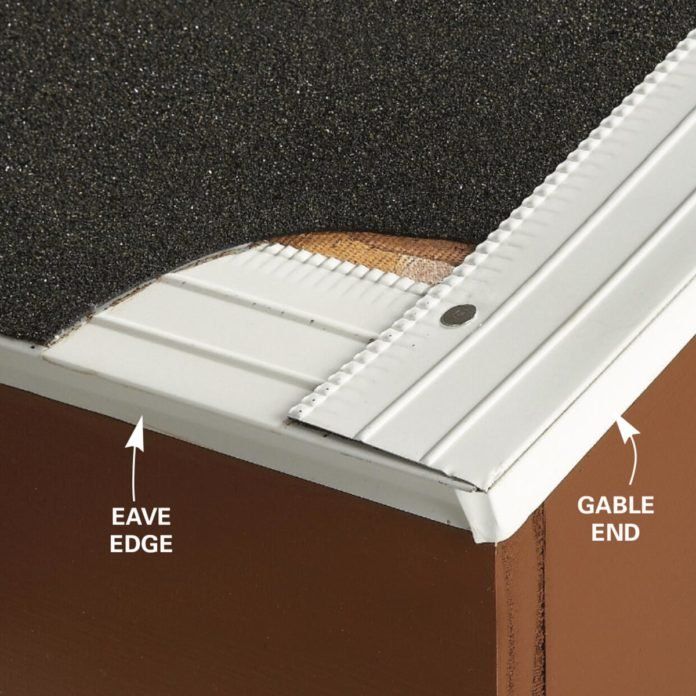 co.uk/car/all-about-tyres/tyre-damages/types-of-tyre-damage
co.uk/car/all-about-tyres/tyre-damages/types-of-tyre-damage
At first glance, it may seem that the socket is a very simple device and its choice is not difficult. But this is only at first glance. In fact, there are a huge number of nuances that you need to know and consider. Even if you choose ordinary sockets for the home.
Unfortunately, there is no single standard in the world, so different countries and different continents use different socket connectors. This is not very convenient, especially if you are traveling and take chargers and other equipment with you that are designed for the Russian standard. In practice, hotels usually have adapters, but this is not always the case. In total, 12 types of connectors are distinguished, which have letter designations.
A - this standard originally appeared in the USA, but has spread to other countries (now there are about 40). These are two flat contacts without grounding, which are located in parallel. At the moment, the A socket standard is considered obsolete (largely due to the lack of grounding), but it can still be found in older buildings.
At the moment, the A socket standard is considered obsolete (largely due to the lack of grounding), but it can still be found in older buildings.
B - is an improved version of the previous type. There are also two parallel flat contacts, but at the bottom there is a contact for grounding. Used in Canada, USA, Mexico and some countries in South America.
C - or simply "Euro socket". In Europe, this is the most common type, which is also found in many CIS countries, which include Russia (GOST 7396). They have two contacts, may differ slightly from each other in appearance. Grounding is missing.
D - This standard is considered obsolete, used by Britain in its colonies. Three round contacts that are arranged in a triangle. Most often, this socket format is found in India and a number of other countries, but not in hotels, but in old houses. It is no longer used in new buildings.
E - socket connector standard, which is adopted in France. It differs from type C by the presence of a grounding contact, which is located in the upper part. Also, this connector can be found in Poland and Belgium.
Also, this connector can be found in Poland and Belgium.
F is a modern European standard that originally appeared in Germany. Two round contacts, above and below there are grounding brackets. Fully compatible with plugs used in Russia.
G - standard, used in the UK, mainly in Ireland. It consists of three flat contacts, two are at the bottom, and the third is above. Euro plugs can be connected to it through an adapter into which fuses are built in.
H - this socket connector is used in Israel, it consists of three contacts that form the letter Y with their arrangement. Until 1989, flat contacts were used, now they have switched to round ones. The standard is unique, used exclusively in Israel, other plugs are incompatible with it.
I - two flat contacts are located at the top at an angle to each other, the third contact is at the bottom, located vertically. It also acts as a grounding element. Used in Australia and New Zealand, as well as in a number of island states in Oceania (Fiji, etc.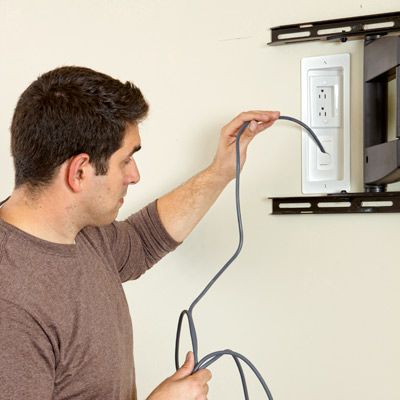 ).
).
J - used in Switzerland, compatible with Euro plugs without adapters. The socket is not considered completely safe, because despite the presence of a grounding contact, the pole contacts are not insulated at the base, therefore, for safety, the plug must be inserted all the way.
K is the standard adopted in Denmark. It is almost a complete analogue of French sockets, with the exception of the location of the grounding contact, which is located in the plug itself.
L is the Italian standard. Three round contacts that are arranged in one horizontal line. Compatible with euro plugs.
These are all common types of socket connectors today. It is important to note that many species have subspecies that differ slightly. By and large, you need to know this information only when you go on a trip and plan to stay in private apartments. In hotels, there are usually no problems with sockets and plugs, as there are always adapters. But it is better to clarify this issue separately.
If we take the most common standards, then there are two of them: 220-250 V and 50 Hz, as well as 100-127 V and 60 Hz. The first is common in most of the world: Europe, Russia, India, half of Africa, Australia, the second is used in North America. Other standards are much less common. Below you can see on the map where and what voltages and frequencies are used.
See also: How to fix a loose socket
In addition to the connector, voltage and frequency, sockets are divided according to other parameters, which are worth talking about in more detail.
There are three main categories: built-in, overhead and portable. They serve for different purposes, have their pros and cons, are suitable for use in strictly defined conditions.
Built-in is a classic type that can be found in any apartment or house. They are installed in a socket box, which is hidden in the wall, as a result, only the protective case and the connectors themselves protrude. They can be equipped with earthing contacts. The main disadvantage is that if there is no recess for the socket in the wall, then it will have to be done.
They can be equipped with earthing contacts. The main disadvantage is that if there is no recess for the socket in the wall, then it will have to be done.
Surface-mounted - fixed directly on the wall surface, the contacts are hidden behind the housing. The advantage is obvious - they can be installed very quickly and easily, it also has disadvantages. First, overhead sockets are prone to damage. They act and they can be offended. Secondly, their use is not very aesthetically pleasing, few people like it if the outlet protrudes strongly from the wall.
Portable sockets are a housing of varying degrees of protection against dust and moisture with contacts hidden in it. Contrary to popular belief, these sockets are not only ready-made extension cords, they are often sold separately and can be connected to wires that are brought out of the wall. But still, their main use is precisely extension cords.
Modern devices have long ceased to be ordinary sockets, the only functionality of which was to attach a plug. Modern sockets may have various additional functions, which in certain cases may simply be necessary.
Modern sockets may have various additional functions, which in certain cases may simply be necessary.
Sockets with shutters cover the input sockets. Special panels move away only when a plug is inserted into the socket. This is also considered protection from children, it is these sockets that are installed in apartments and houses where there are children. The shutters prevent access to the contacts of any foreign objects, for example, you can’t put your fingers in there.
Residual current sockets (RCD) are extremely useful in terms of safety, they are recommended to be installed in the bathroom, where contact with moisture is possible, as well as in the case of connecting powerful electrical appliances. The RCD opens the contacts at the time of leakage, which prevents electric shock or damage to the appliance. Such sockets are not cheap, but this is just the case when saving is not worth it. This feature is very useful in terms of security.
Sockets with a timer are used in conjunction with devices that need to be operated for a certain amount of time, but they themselves are not equipped with timers. For example, you have a heater, but it should not work during the day. The timer on the outlet will allow you to set the operating mode. And they are also called “smart”, however, this is the name of any sockets that have functionality that allows you to control the operating mode or have other similar additional functions.
For example, you have a heater, but it should not work during the day. The timer on the outlet will allow you to set the operating mode. And they are also called “smart”, however, this is the name of any sockets that have functionality that allows you to control the operating mode or have other similar additional functions.
Sockets with covers are used in rooms where there is very high humidity or a lot of dust. Accordingly, when it is not in use, the lid is closed; when used, the lid is open, but the plug still prevents moisture or dust from entering.
USB sockets have one or more additional USB outputs that allow you to charge smartphones or other devices that support this socket. This is a modern solution that is very convenient.
These are the most common types, we can also mention sockets with Wi-Fi, with a plug ejector, illuminated, radio-controlled and others. Separately, we note such a type as a plug-socket voltage relay, which is recommended to be used where the wiring has not been changed for a very long time and there is a high probability of power surges and other undesirable effects.
It is important not only to choose the most suitable type of outlet, but also the right place to install it. This is especially true in the case of built-in models (which are used most often), because they must be immediately installed in the optimal place, otherwise you will have to redo everything, which is often not only difficult, but also expensive. Of course, there can be no single recommendations for the installation site, it all depends on the specific room. Let's talk in more detail.
In the kitchen, you should start by counting all household appliances and determining the places where they will stand, after which they are already considering the installation of sockets. Of course, they cannot be installed next to washbasins, nor can they be installed behind electrical appliances. For example, blocking the refrigerator outlet would definitely not be the best idea. In general, here are the following recommendations:
 This will avoid accidental water ingress;
This will avoid accidental water ingress; The kitchen is a place where there is a high probability of water getting on the contacts, so sockets with covers (which are intended for temporary connection) are often chosen.
In the bathroom, you need to install only the required number of outlets, excesses are not needed here. The best location is near the sink. The bathroom is always water, so sockets must be waterproof and with covers that cover the contacts. Degree of protection – IP44 and above. Sockets must have a residual current device (RCD). Yes, they are more expensive, but you should not save on your safety.
See also: What you need to know about electrical wiring and the use of electrical appliances in the bathroom
In the bedroom, sockets are placed in certain areas, the number depends on the installed electrical appliances.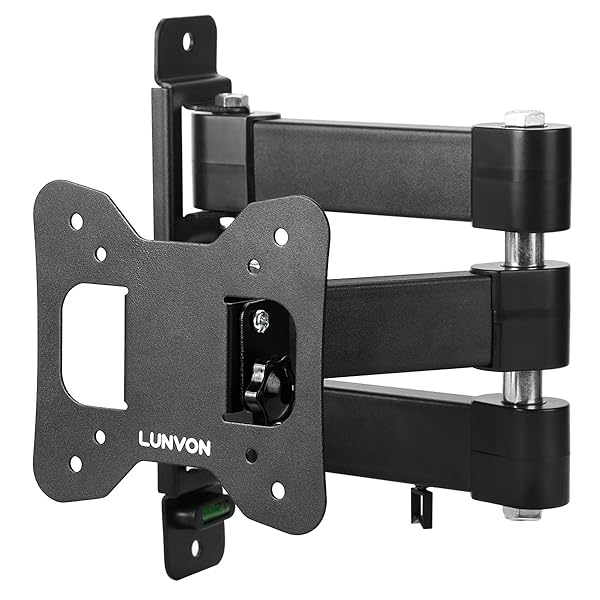 Two by the bed (for the lamp and for charging the phone), 2-3 behind the TV (if installed), several at the desktop (if there is one). One outlet should be at the door, it is needed to connect a vacuum cleaner or heating appliances.
Two by the bed (for the lamp and for charging the phone), 2-3 behind the TV (if installed), several at the desktop (if there is one). One outlet should be at the door, it is needed to connect a vacuum cleaner or heating appliances.
Modern sockets are distinguished by their diversity and an impressive set of additional functions and characteristics. That is why today it is not necessary to buy just an ordinary model that does not meet certain requirements, does not have the necessary protection, etc. A high-quality and properly installed socket can work for many years, so you should not save on both buying them and installing them.
It happened suddenly, like most of these stories. My alarm went off. I kicked my leg, suddenly awake, and it came into close contact with the new laptop that lay innocently at my foot on the hotel bed. He landed on the leg of a chair - the sound of impact was loud. There is a visible dent in the aluminum next to the Apple logo.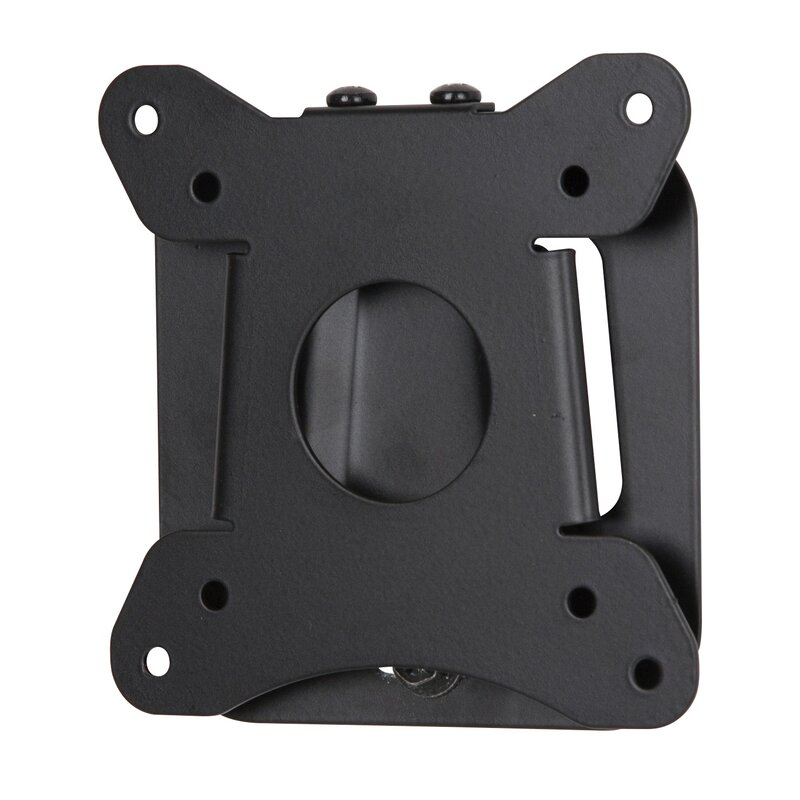 I opened it and saw a huge blob of dead pixels.
I opened it and saw a huge blob of dead pixels.
I had few options. $600 for a screen replacement at the Apple store. $500 from an independent repairer. I scoured eBay and found out that a new screen could be bought for $50, if I didn't mind knowing what the inside of a MacBook Pro looked like. I clicked buy. And then I saw the screws.
***
If you've ever tried to open an iDevice - iPad, iPhone, iMac, whatever - done in the last four years, you've come across Apple's tiny five-pointed "Do Not Enter" signs. This is a clear statement that your phone, computer, tablet, is not really yours, and you should not poke around in it. This is a public statement that you are not qualified to fix your own things.
If you're reading this on an iPhone, or if you have one nearby, look at the charging port and next to it you'll see these two tiny five-lobed screw heads [pentalobe] that don't occur in the wild.
There is a solution for the five-blade screw - a screwdriver from the California startup iFixit, which simultaneously opposes Apple and does everything so that, despite the constant complication of electronics, amateurs can still learn how to repair it (and behind them began to produce screwdrivers and other companies). [ not to mention aliexpress - approx.transl. ]
[ not to mention aliexpress - approx.transl. ]
I recently spent a few days with iFixit CEO Kyle Vines and repair experts at an electronics reuse conference in New Orleans. I wanted to know exactly how manufacturing companies infringe on our rights to open, tinker with and repair their devices that we own.
Manufacturers tried to invoke the Digital Millennium Copyright Act (DMCA) to prove that the software that makes electronics electronics belongs to them, which means that tinkering with this software would be copyright infringement. Apple quietly ended accepting applications from new applicants to become an "Authorized Service Center" in 2010. There is a seizure of batches of "fake" parts coming from China, which in fact may be quite legal. There are Apple device leasing programs being developed so that you can never truly own a phone again.
“Usually, if the head of a hammer I bought falls off, I have the right to fix it. And then I can use it again,” Charles Duane, director of the Public Knowledge Patent Reform Project, told me. “And in the case of new electronics, the manufacturers want only them to be able to repair it, because they have more profit from it. They have already found many ways to achieve this. Intellectual property laws, contracts, user agreements - lots of ways to make sure you can't do whatever you want with your stuff."
“And in the case of new electronics, the manufacturers want only them to be able to repair it, because they have more profit from it. They have already found many ways to achieve this. Intellectual property laws, contracts, user agreements - lots of ways to make sure you can't do whatever you want with your stuff."
Therefore, Apple has many ways to keep you out of their devices. But why not start with a screw. On January 20, 2011, Reuters wrote that Apple employees were told not to tell phone owners about the substitution. The replacement was supposed to ensure that no one but Apple would get into the device.
The iPhone 4 had normal Philips head screws. But around 2010, the company gave instructions to its "geniuses" in the Apple Store to replace these screws with five-lobed ones in smartphones coming in for repair. In theory, this was supposed to restrict access to devices for everyone except Apple.
Vines anticipated this development, it was he who told Reuters about what was happening, and then, the day after the article appeared, iFixit released an "iPhone release kit" consisting of a five-blade screw driver and two regular head screws.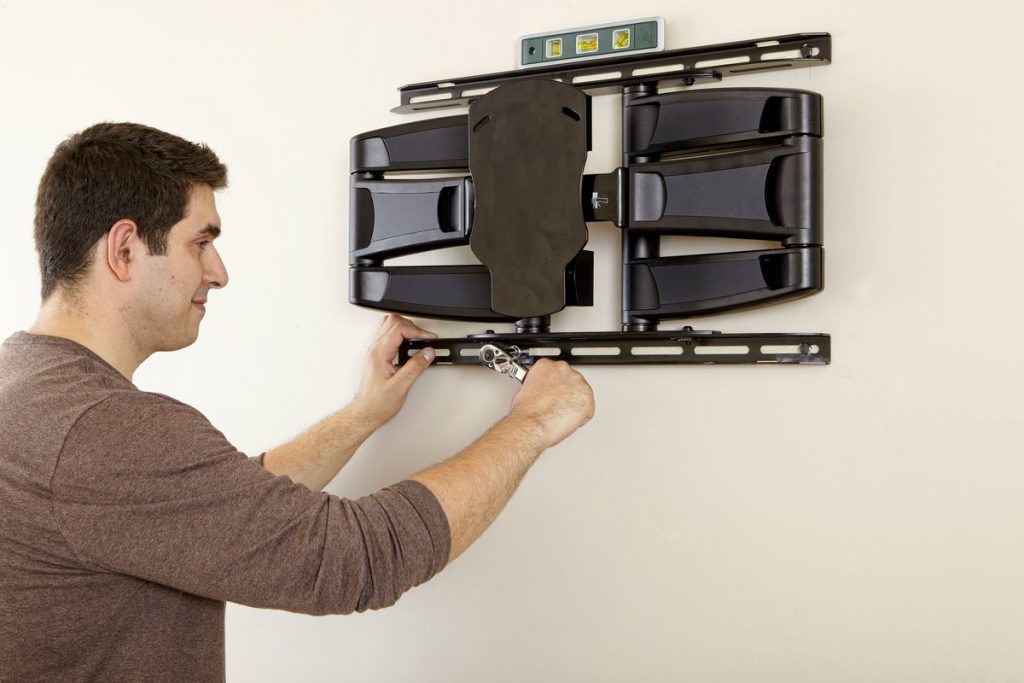 During his trip to Japan, Vines discovered that the Japanese iPhone 4 came with five-lobe screws. One of the local repairmen, using a microscope and a file, whittled down a flat screwdriver to the state of a five-bladed one, and managed to open the iPhone.
During his trip to Japan, Vines discovered that the Japanese iPhone 4 came with five-lobe screws. One of the local repairmen, using a microscope and a file, whittled down a flat screwdriver to the state of a five-bladed one, and managed to open the iPhone.
“It was the first non-Apple screwdriver in the world that could unscrew a five-blade screw,” says Vines. “Apple was literally tightening the screws on its users, and because we knew everything in advance, we were able to sell the screwdriver as soon as it arrived in the US.”
Kyle Vines
I learned about iFixit shortly after this screwdriver. After searching on Google, I came across the website of the Californian company San Luis Obispo. After purchasing a five-blade screwdriver, I spent a few minutes researching the site, and it opened my eyes to the existence of a large and thriving community of DIY tribal repairmen.
Would you like to know how to fix the "red ring of death" that occurs on the Xbox 360? iFixit has step-by-step instructions for hacking the device, and you can also buy parts and tools there. Looking to take apart your DSLR camera lenses? Replace screen on iPhone (or any other phone)? Install more memory in your computer? Fix an alarm clock? iFixit has it all. Want to know how an iron works? What about a washing machine, or a Speak & Spell toy? No problem. Would you like to learn how to sew a button on a shirt? You will be taught that too.
Looking to take apart your DSLR camera lenses? Replace screen on iPhone (or any other phone)? Install more memory in your computer? Fix an alarm clock? iFixit has it all. Want to know how an iron works? What about a washing machine, or a Speak & Spell toy? No problem. Would you like to learn how to sew a button on a shirt? You will be taught that too.
While I keep mentioning Apple, Apple is not alone in trying to ban or make it harder to fix broken things. Most manufacturers choke up repair instructions, but Apple is only mentioned because the repair market for iPhones is larger than any of the android phones.
John Deere argued to the copyright department that allowing farmers and mechanics to fix their tractors would result in "pirates, third-party developers, and less innovative competitors being able to profit for free from creative achievements, unique implementations, and the genius of machine software." Lexmark has been suing a company that reverse-engineered their printers to develop and sell cartridges for a long time.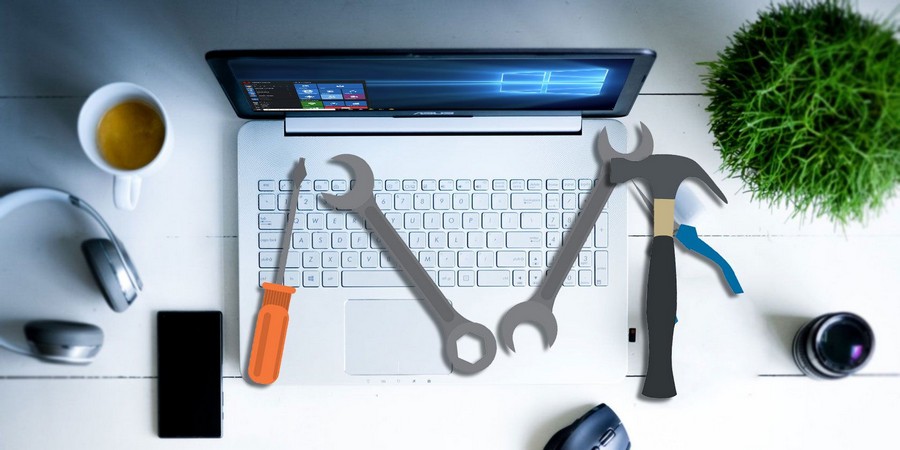 It's almost impossible for a consumer to open an HTC One, and so on and so forth.
It's almost impossible for a consumer to open an HTC One, and so on and so forth.
The Electronics Reuse Conference was filled with people who rejected the desire of manufacturers to control devices in the hands of users. There are, of course, industry secrets and repair strategies that companies don't share - basically, these people are trying to figure out how to convince consumers that fixing electronics is often better than replacing it.
"We're not competing with each other," Vines tells a hundred repairmen (there are various people at the presentation, but mostly middle-aged white men). "We compete with the trash."
"When you first open an electronic device, it goes from a magical black box to a bunch of things all tied together."
When iFixit uncovered microscopes and soldering irons to demonstrate the repair and replacement of transistors and capacitors a hundred times smaller than a dime on an iPad board, it became clear that these professionals took the art of repair much more seriously than any manufacturer.
"People here do things that Apple can't even dream of doing," Chris Collins, a Texas repairman, told me. Collins repairs Apple devices, game consoles, old stereos and turntables, and even has a contract to fix security cameras in the city's sewers. "The world's best repair professionals don't work for Apple."
Jessa Jones, a former microbiologist, now repairs iPads. In a professional environment, she is considered one of the best specialists in the world. In addition to raising four children and working as a housewife, she spends her days retrieving valuable data from water-soaked iPads that no one would touch, or fixing short circuits that burned out the backlight of tablet screens. She does her job so well that she won't charge for failed repairs.
"Even in our repair community, the art of circuit board repair is considered to have died when things got down to the microscopic level," says Jones, who founded the board repair school. "This is not true. The more people involved in high-level repairs, the more devices we save, the more data we recover, the more we can promote our idea to the masses. ”
”
Later, over a beer, Vines gets nostalgic and reminisces about the days when washing machines lasted fifty years instead of five. He notes that the increase in smartphone screens is leading to more broken smartphones – “Have you ever seen a Galaxy Note with a full screen?” he asks – and rants angrily about his company even having to exist.
He says that the fact that Apple and other manufacturers do not sell parts to consumers and do not give them instructions for repair, leads to catastrophic consequences for the environment. The move to unique propellers, threats to get caught in the rink of copyright lawyers, feuds with independent repair shops all show that the anti-repair culture did not grow out of naivety or carelessness – it is nurtured with malicious intent.
According to Vines, leaving a broken phone in a drawer or throwing it in the trash are two of the worst things you can do to electronics. Yes, and processing will not be much better.
"For electronics, recycling should be the last resort," writes Vines in his article "Happy Earth Day, Don't Recycle Anything. "
"
In an ideal world, your item would be repaired and you would continue to use it. Or you could fix it and sell it, or just make sure it gets fixed and used - that would be just as good. “Mining and manufacturing are – in that order – the worst thing we do to the world,” he told me.
Agbogbloshi district of the capital of Ghana, Accra
When creating a smartphone, about 50 elements of the periodic table are used, many of which are present in very small quantities. And most of them are not available for recycling.
“The plastic of your iPhone will be turned into low quality plastic and then into a park bench. It's a shame because it's high quality plastic and can cost up to $30 a pound, he says. After processing, it will already cost ten cents a pound, since it cannot be processed separately from the cheap one.
If we don't want to use electronics for its entire possible life cycle, we need to figure out how to keep it in working condition and give it to people who can use it.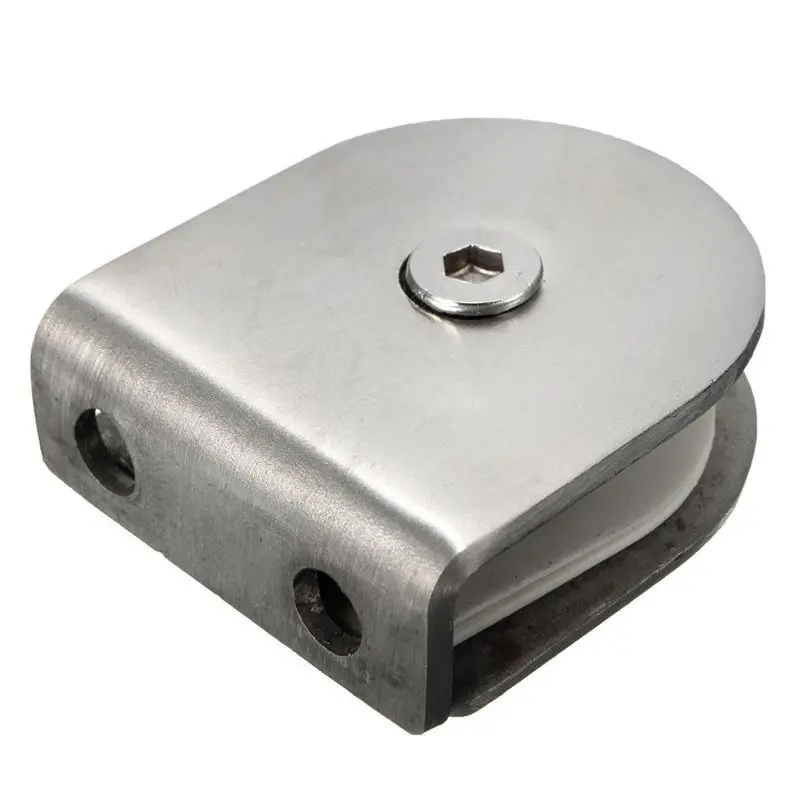 "Everyone should have a cell phone, but we have to figure out how to achieve this in a smart way," he says.
"Everyone should have a cell phone, but we have to figure out how to achieve this in a smart way," he says.
Much of Vines's environmentalism was born on several trips to developing countries. He gets most excited when he talks about people - a water pump repairer he met in Kenya, the best mechanics in Cairo, or people from Delhi opening up old CRT TVs and monitors to make new ones (this is very dangerous, because in each CRT monitor has up to 5 kilograms of lead).
“We've all heard about e-waste and I decided to see it for myself,” he says. So he visited the Agbogbloshie area in Accra, the capital of Ghana, commonly referred to as "the world's largest electronic dump", and many other cities in the developing world. (He even made a documentary on the subject that hasn't been released yet). Agbogbloshi is truly a disaster for the environment, but it's not that simple.
“Everyone says that we throw garbage in Africa. But it's not really like that, says Vines. “In fact, they buy electronics from us out of necessity, and when it breaks, they throw it away because they don’t have recycling and waste disposal facilities. ”
”
According to Vines, parts and repair instructions are not available in Agbogbloshie and many other places, and as a result, they have no way not to throw these things away.
“The problem is that there are complex products, and their manufacturers do not share information with us about how to fix them. You make a million printers, they are used in a million different ways, and at the end of their life they are thrown away or disposed of in a million different ways as well. It's a lever that we can use by teaching people how to fix things. We accidentally stumbled upon a solution to a huge problem. That's why I do my job."
***
When I ordered an LCD screen for a MacBook, I didn't think about its origin. Yes, I had no idea about it. But it wasn't made by Apple. Go to eBay or search for computer or smartphone components. You'll find camera parts, headphone connectors, LCD screens, and iPhone front panels (it's easier to replace the entire panel, including the camera, than a single glass). You will see a huge range of prices for spare parts and their different names. There will be "original" parts, OEM, "certified", "used" and "mined from used devices".
You will see a huge range of prices for spare parts and their different names. There will be "original" parts, OEM, "certified", "used" and "mined from used devices".
Even people who make a living repairing, it is not clear what these words mean.
Everything is as intended. Americans spent over $23.5 billion fixing and replacing broken smartphones between 2007 and 2014. In 2013, an analyst reported that Apple was going to save a billion dollars by fixing iPhones instead of replacing them, giving an idea of the size of the repair market for the most popular phone in the world. Apple wants to bite off a bigger piece of the market. Since it controls the hardware, it wants to control the parts market as well.
It's not illegal to sell and manufacture LCD screens for the iPhone, but it's illegal to make a back panel with the Apple logo. Apple has trademarks for things like the rectangle on the home button, and it even puts logos on some internal cables.
So what is a fake part? Who knows!
“Apple and Samsung don't like the gray market, which is the gray market,” Scott Head of iFixit explained at the conference. “There is a difference between how authenticity is perceived by customs officers and manufacturers.”
“There is a difference between how authenticity is perceived by customs officers and manufacturers.”
Most repairers told me that they try to order legal parts from China. But did those 500 Sony Xperia panels come from original production? Fell off a truck on the way? Made without permission from Sony? All this matters - and many problems would be solved if only manufacturers would simply sell parts themselves to consumers and repairmen.
Questions like these lead us to situations where customs officers, after raiding 25 Miami repair shops, confiscate “fake” iPhone parts worth $300,000. Local news in 2013 reported:
“Abel Abella claims that 20 customs agents and two people from Apple came to their Bird Road store. “We bought parts from a Californian company. They still sell them to this day,” says Abella. “Why did they come after me?”
Abella did not want to give me an interview, but said that the raid was devastating. “Since then, I have not repaired iPhones, I have gone out of business altogether.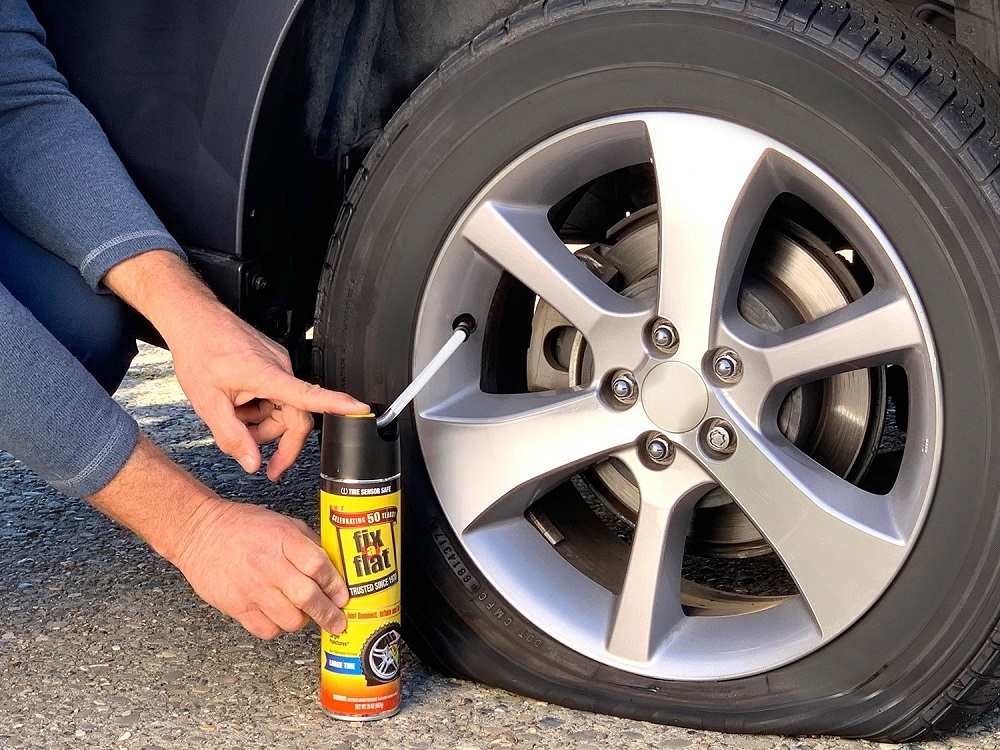 ”
”
Last year, customs officers confiscated $162 million worth of parts and electronics in 6,612 raids under the Operation Chain Reaction program, which involved 16 government agencies. It is easy to find forum posts by people whose businesses or lives have been destroyed by this program.
“We were terrified, we removed all parts from all stores and brought them to my house,” said Ivan Mladenovic, who runs two TechBar repair shops in South Florida. – We transported 2-3 parts to the workshop at a time. I have the impression that the iPhone repair business may just disappear one day. Apple can just eliminate the entire industry if it wants to go against us."
***
The ability to fix your stuff disappears as the electronics become more complex in the device, the ability to open it and get rid of it becomes easier. Most people who promote do-it-yourself repairs have had some moment of insight that inspired them to do so. This happened to me on my laptop.
Vines listens intently as I used his website to hack my MacBook Pro, and because I saved on tools, I used a knife to remove glass from the LCD. I had little understanding of what I was doing, and at 4am, after six hours of fiddling, solving problems, and trying not to lose the screws that were barely visible to the eye, I was left with a set of parts on the kitchen table and a headache of frustration.
Vines knows this feeling. iFixit was born out of a complicated laptop repair he did in college. As a student at Cal Poly, he saved up enough money to buy a new iBook for $1,800. Like me, Vines showed his clumsiness by breaking his laptop shortly after purchase. But, unlike me, he had no one to turn to for help.
He looked for repair instructions, but found nothing. And still took it apart. “It was two o'clock in the morning, and I thought, 'I'll leave the details and collect in the morning.' It was a bad idea. The next day I couldn't figure out what was where. Then I still put it all back together, and the computer worked, but not the way it used to. ”
”
Vines continued his research and discovered that Apple was filing DMCA lawsuits against sites that dared to post official repair instructions for the company's equipment.
"And I thought, 'Wow, they're using copyright to stop people from fixing things.' I thought it was some kind of heresy.”
Vines and his partner, Luke Souls, decided to find all iBooks, PowerBooks, write repair instructions for them, and sell them for $15. Things did not go well, they never sold their 50 instructions. Then they put them on the site for free, they were written about in a couple of blogs dedicated to Apple, and they suddenly became a source of information of this kind.
“This is all an attempt to get around copyright laws. Based on the results of our research into developing countries, we decided that the world needs a manual for repairing everything. There are two ways to do this - either force manufacturers to open their documents, or write new ones. We have not abandoned the first point yet, but we are concentrating on the second. ”
”
On the first issue, iFixit has become one of the most prominent companies campaigning for DMCA reform, and even snatched a small victory when the head of the Library of Congress allowed a couple of exceptions to the law protecting the “right to be fixed.” iFixit targeted and successfully attacked John Deere Corporation - now farmers can pick tractors without fear of being sued. The company is now fighting to pass a state law that would require manufacturers to sell repair parts and issue manuals.
Few small companies that tried to oppose the world's largest corporations survived. Even fewer live well. But iFixit seems to have found its niche in throwing stones at Apple's Goliath. First came the five-blade screwdriver, and by the time the iPhone 4S was released, iFixit had sent one of its engineers to Australia so he could be one of the first buyers of new devices in the world—and one of the first to disassemble them. The company is operating at a profit, although Vines won't elaborate on exact numbers.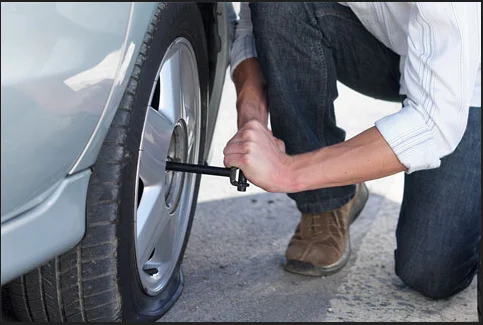 A spin-off company, Dozuki, sells wiki technology to corporate customers around the world.
A spin-off company, Dozuki, sells wiki technology to corporate customers around the world.
Every time a new iPhone, MacBook or iPad is released, iFixit has to craft new tools to open and fix them in a artisanal way. A week after the release of the Apple Watch, the company has already made special adhesive strips to assemble the watch after repairs.
“Pizza Cutter” (iMac Opener) and iSlack Opener Tool
“We have a pizza cutter thing that can be used to open new iMacs, so we got into the pizza cutting business as well. Vines says. And we also make suction cups, which I certainly did not expect - they are needed to open iPhones. Apple and I have been butting heads for a long time. This company solves problems by ignoring people.”
After the article was published, Apple responded to one of my three requests: “We do not discuss the company's future plans and do not disclose information about the profits received from the repair. For all up-to-date information regarding authorized repair shops, please visit locate. apple.com". iFixit took it apart as usual.0004
apple.com". iFixit took it apart as usual.0004
Another interesting change between the iPhone 5S and iPhone 6 is worth noting. The 5S is especially dangerous to repair - the wire from the Home button to the motherboard is very easy to tear off when you open the phone (it happened to me). And for security reasons, a break in this wire causes the TouchID to fail on the device. Forever and ever. On the 6th iPhone, this wire was shifted differently so that it did not interfere, and it was no longer so easy to break it.
“Apple makes over a billion a year fixing iPhones, so they can afford to have Jonathan Ive make the iPhone more repairable,” says Vines. “Changes like this take time and careful thought, and are expensive—all in the name of making the device more repairable.”
Following criticism from Vines and the media that the MacBook Pro Retina uses excessive adhesive to mount the battery, Apple has moved to easier-to-remove adhesive strips that secure the battery to the iPad Pro. The change seems small, but it's not. Apple lost its "environmental" status in EPEAT, an organization under the wing of the environmental protection agency, because the MacBook Pro Retina with glued batteries could not be recycled. Leaving batteries in devices often results in a fire.
The change seems small, but it's not. Apple lost its "environmental" status in EPEAT, an organization under the wing of the environmental protection agency, because the MacBook Pro Retina with glued batteries could not be recycled. Leaving batteries in devices often results in a fire.
“The guys at Apple armed themselves with a sledgehammer and a crowbar and pulled out their battery,” says Vines. Apple got its certification back and switched to adhesive strips. In this way, we have already won back a lot - using as arguments the concern for the environment.”
“I sat through meetings with their lobbyists,” he adds. “They get paid to object to anything that might limit their designers.”
iFixit recently announced that it will replace Apple with bulk parts shipments to repair shops and launched a workshop certification program through an online test. But more importantly, iFixit makes it clear to those brave souls who dare to open their devices - they are not alone..jpg) Most repair instructions are written by users of the site. DIYers on the forums are constantly discussing hacks, modifications and other tricks that make it easier to repair devices.
Most repair instructions are written by users of the site. DIYers on the forums are constantly discussing hacks, modifications and other tricks that make it easier to repair devices.
“We want to teach everyone how to fix everything,” Vines says. “Without the help of the community, we cannot do this.”
***
My MacBook is in the process of being repaired
I worked on my MacBook until dawn. The screen clicked strangely when I opened and closed it, but all the small cables were stuck in place. I pressed the power button and it worked.
For me, as for a person who has avoided manual labor all his life, whether it be rough or precise, this feeling was unexpected and unusual. I fixed something myself. To some small extent, I had the feeling that I had gone against the system. But mostly I was just proud of myself.
“When you open an electronic device for the first time, it's no longer a magic box, and you see it's just a bunch of parts put together,” Vines says. — A plumber is not necessarily better than me in plumbing, he just works faster and he is more used to it. So it is with many other things.”
— A plumber is not necessarily better than me in plumbing, he just works faster and he is more used to it. So it is with many other things.”
At his California home, he fixes garden sprinklers, chairs, toilets, and anything that breaks. Replaced the clutch on my pickup truck, tried to assemble a disassembled chainsaw, and got scolded by the manufacturer of a folding knife when I tried to change the spring in it. But most of all he is afraid of changing the zipper on his jacket (“A story for the whole day, and most likely with an unhappy ending”).
Repairman's Bible - Shop Class as Soulcraft by Matthew Crawford, 2010. The author writes about how he quit his high-paying job as an office analyst and took up the repair of motorcycles - and received from this work more pleasure and intellectual stimulation.
“The disappearance of tools from the curriculum is the first step towards total ignorance in the artifact world we inhabit,” writes Crawford. “The engineering culture that has emerged in recent years, in which an object must hide its internal structure, leads to the fact that we do not know how to study a lot of the things we use. ”
”
Everyone who works in the company has such thoughts. When they moved to their current location, an office formerly owned by car dealers, employees spent several weeks redeveloping it.
“We deliberately left the renovation unfinished. On Saturdays we built wooden planks that we had bought. The tool development team is sitting over there in shipping containers. They took plasma cutters and cut out the doors and put them on sliding mechanisms,” said Scott Dingle, who has been with the company for four years. “If we could build this building ourselves, we would do it – that’s our mentality.”
“This is a group of do-it-yourselfers who love to build and modify things on their own,” says Jake DeVinchenzi, a former iFixit employee who now works for an electronics recycling firm. “If all of Kyle’s wishes were fulfilled, we would live together in perfect harmony.”
And it’s not a matter of opposing Apple or any other company. And it’s not just about fighting for the environment.